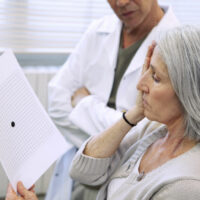7 warning signs of poor blood circulation

An existing condition or a problem in the circulatory system can result in poor blood circulation. This disrupts the supply of nutrients and oxygen to various parts of the body. When vital organs do not get enough blood, they may be unable to function normally, leading to various health issues. This is why it is important to keep an eye out for the warning signs of poor blood circulation and seek treatment to prevent complications.
Warning signs
1. Numbness
This is one of the key warning signs of poor circulation. The restricted blood flow leads to inadequate oxygen and nutrient supply to the extremities, leading to such complications. Here, one may experience numbness and tingling sensation in the hands and feet. This feeling can also be described as pins and needles or a prickling sensation.
2. Swelling
Poor blood circulation can lead to blood clots, resulting in blood accumulation in the region and blockage in blood vessels. The clots are a warning sign of another condition called DVT (deep vein thrombosis), which often develops in the lower leg but can also affect the arms and the belly. Here, even when the clot is gone, one may experience pain in the area and swelling due to the damaged blood vessel under the skin. Additionally, poor circulation can result in fluid buildup in the legs, called edema. With this, one may experience swelling in the feet, ankles, and legs. Further, the affected part might feel tight and difficult to move. One should consult a doctor upon noticing any swelling.
3. Muscle cramps
This is another common sign of poor blood circulation. Muscle cramps can develop during exercise. However, when one experiences frequent muscle cramps without any apparent reason, then it could be a sign of persistently poor blood circulation. Cramps usually develop in the legs and tend to worsen while walking as the legs are unable to get enough oxygenated blood. One may experience such cramps in the calf, buttocks, or thighs. The pain here could be brought on due to plaque buildup along the artery walls, which narrows them. This condition is called claudication.
4. Cold hands and feet
If the hands and feet often seem much colder than the rest of the body, this could be a warning sign of poor blood circulation. Here, the body is unable to pump warm blood to the fingers and toes, i.e., the extremities of the body. Upon noticing this symptom, one should keep an eye out for any discoloration in the hands and feet, which could indicate the development of cyanosis—a condition in which oxygen cannot reach certain parts of the body. Discoloration could also indicate other health issues like diabetes, so one should speak to an expert and get a diagnosis immediately.
5. Weak immunity
Antibodies are blood proteins that help the body fight infections and foreign particles that enter the body. When issues in blood circulation, these antibodies are unable to carry out their functions, leading to a weakened immune system. This means that one may take longer to recover from illnesses, experience slow-healing wounds, and seem to fall sick often. One should get tested for poor circulation upon noticing this symptom.
6. Sores
Ulcers and sores on the skin are common signs of poor blood circulation. Due to the disrupted supply of blood in the body, the recovery or treatment for these sores and ulcers can be an extremely slow process. Further, in the process, sores can get infected, taking even longer to heal. Upon noticing this symptom, one should consult a doctor and seek prescription options to speed up the recovery process.
7. Varicose veins
This sign refers to the bulging of the veins in the legs brought on by valve dysfunction. Varicose veins are characterized by a spider-like vein pattern visible on the skin, often taking on a blue-purple color. This symptom usually develops on the thighs. Sitting for too long or standing for long periods can also worsen the issue. Although typically not a serious condition, varicose veins, when accompanied by discomfort like pain, swelling, aching, heaviness in the leg, muscle cramps, and irritation, should prompt one to seek treatment. One may be told to wear compression stockings to manage the issue or could be prescribed other options to address the underlying problem.
Additionally, one should keep an eye out for unusual changes like weak nails, hair loss, bowel movement issues, dry and patchy skin, dizziness, and fatigue, as they could be warning signs of poor circulation. Here, it is important to consult a doctor to determine the underlying problem and seek appropriate treatment for the issues. Further, one should only opt for treatment options or remedies that have been prescribed by the doctor.
Management tips
In addition to seeking appropriate treatment for bad circulation, here are a few tips to consider for preventing further complications:
– Adequate hydration can help restore proper blood circulation, so one should aim for at least 8 glasses of water a day. One can increase the number of glasses if they engage in regular exercise or reside in regions with hot weather.
– Exercising is another good way of maintaining good blood circulation in the body. Those who struggle with intensive exercises can try low-impact options like yoga to improve blood flow.
– Another key tip is making better food choices. Following a balanced meal plan is a great way to ensure healthy blood flow. The meal plan should consist of nutrient-rich foods like a variety of fruits and vegetables. Further, one should limit the intake of saturated fats found in sources like red meat, processed foods, and full-fat dairy products. However, one should avoid making drastic changes to their meal plans without consulting a doctor or nutritionist.



